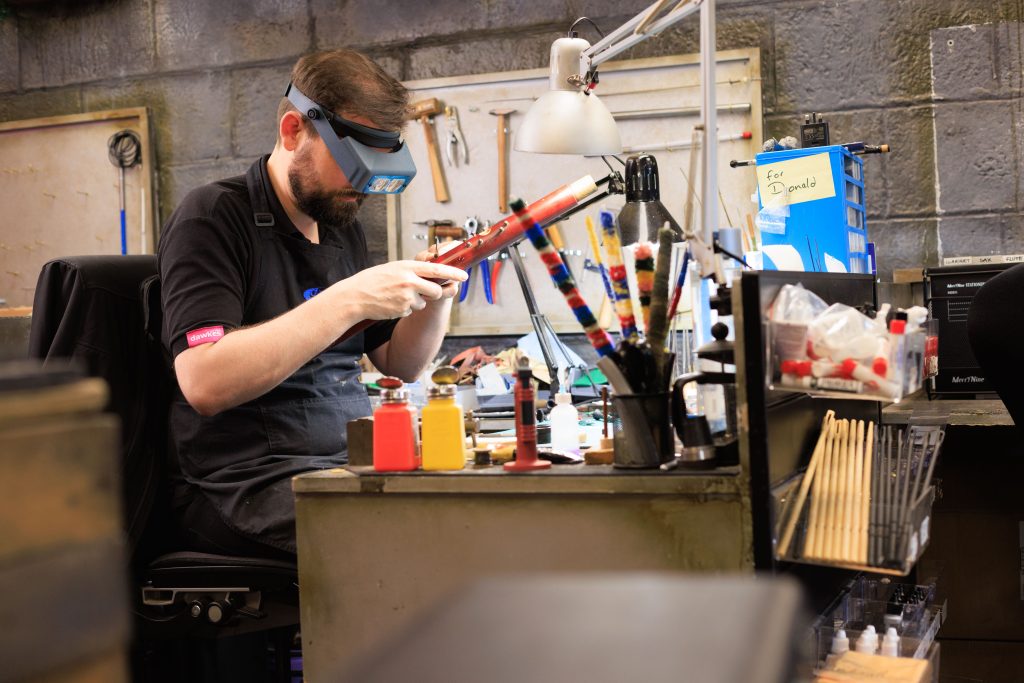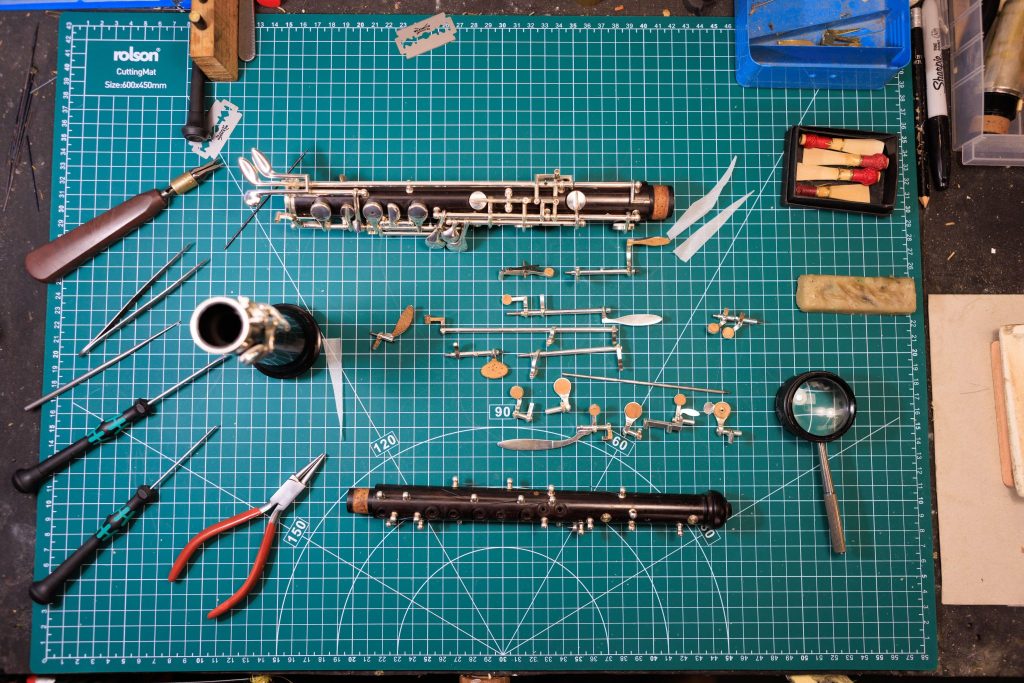Technician Tales: Common Double Reed Faults and How to Avoid Them
25th September 2025Every double reed player knows the love-hate relationship with our instruments. As much as we adore them, they can be fragile, fussy, and expensive to repair if mishandled. We spoke to Head Technician, Abi Taylor for some of the most common double reed faults our technicians see and how to avoid them.

1. Don’t Lift the Bassoon by the Bell
The bell section might feel like the perfect handle – there’s barely any keywork, and it gives you something to grip. However, the bell sits on a corked tenon. This can loosen over time or even needs a looser fit for easy assembly. By lifting the bassoon by the bell, you risk the bell detaching, letting the hefty weight of rest of the instrument crash to the floor. If your crook and reed are attached, this almost always means a bent crook or costly replacement. Always support it from the boot joint if possible. Don’t rely on or trust the tenon corks to hold firm by using the upper joints as carry handles.
Stay aware of your surroundings as you move around carrying the bassoon. Always check for clearance of door frames in particular as the instrument is probably longer than you think!
2. Handle Your Bassoon Crook With Care
The crook (or bocal) is a very thin and fine tube with specific wall thickness and bore size throughout the curve. Even a little mishandling can ruin it. When assembling the Bassoon:
- Be mindful of this precious element and ensure the cork is greased and not a battle to fit into the wing joint.
- Place your hand around the rear curve/straight of the crook and ‘wiggle’ side to side as you’re pushing into the socket.
Avoid gripping too near the reed end – the leverage can bend and collapse the crook, damaging airflow. Depending on the base metal, age and build quality, this kind of damage can cause splits or simply write the crook off.
3. Oboe Regulation is Tiny but Crucial
Oboe keywork is incredibly precise, with cork pads that leave very little margin for error due to their stability and firmness. On saxophones, for example, soft pads allow you to squeeze harder to compensate for poor set-up. Whereas on oboes, the smallest, seemingly insignificant piece of material wearing through or falling off can suddenly make the instrument totally unplayable. These kind of adjustments must be regularly maintained, on a professional oboe there can be around 20 of these small screws dotted around, all critically important.
Regular maintenance ensures everything works harmoniously, avoiding those frustrating moments when the instrument just won’t speak.

4. Pinned Keywork Needs Gentle Hands
Oboes have pinned mechanisms, especially on the left and right-hand pinky key clusters. The rods are very close tolerance, and have a thin layer of oil keeping them free and frictionless. Common trouble spots:
- The left hand ‘feather’ keys are exposed and vulnerable, and will often receive impact, handling or drop damage causing the pieces to seize up.
- the right hand Eb/C# keys are pinned on an internal rod, and these keys are very easy to unknowingly squeeze during assembly, jamming them up completely.
Pro tip: always grease tenon corks and keep an eye on your hand placement during assembly and dismantling. A little awareness goes a long way in preventing jams or bent rods.
5. Reed Management is Everything
It’s incredible how many issues with double reed instruments revolve around the reeds themselves. These little monsters can be problematic from the start, so it’s really helpful and important to get to know how to identify a good vs. bad reed, and how to protect the good ones:
- Check symmetry: The top corners and the ‘scrape’ should be even. Hold your reed up to a bright light to see the cane thickness. There can be different styles of scrape that create different responses, but a neat, even scrape will always perform better.
- Mind the moisture: Wet reeds need airflow. Don’t store them in airtight containers – this encourages mould. Invest in a reed case that allows gentle drying.
- Mark your favourites: Pencil markings help track which reeds play best, especially in larger cases.
A well-chosen, well-cared-for reed can make the difference between a frustrating practice session and a joyful one.
Final Thoughts
Most of these issues come down to awareness and small habits in handling. Taking a moment to grease corks, support the instrument in the right place, and store reeds properly can prevent many of the faults that end up in the workshop.
